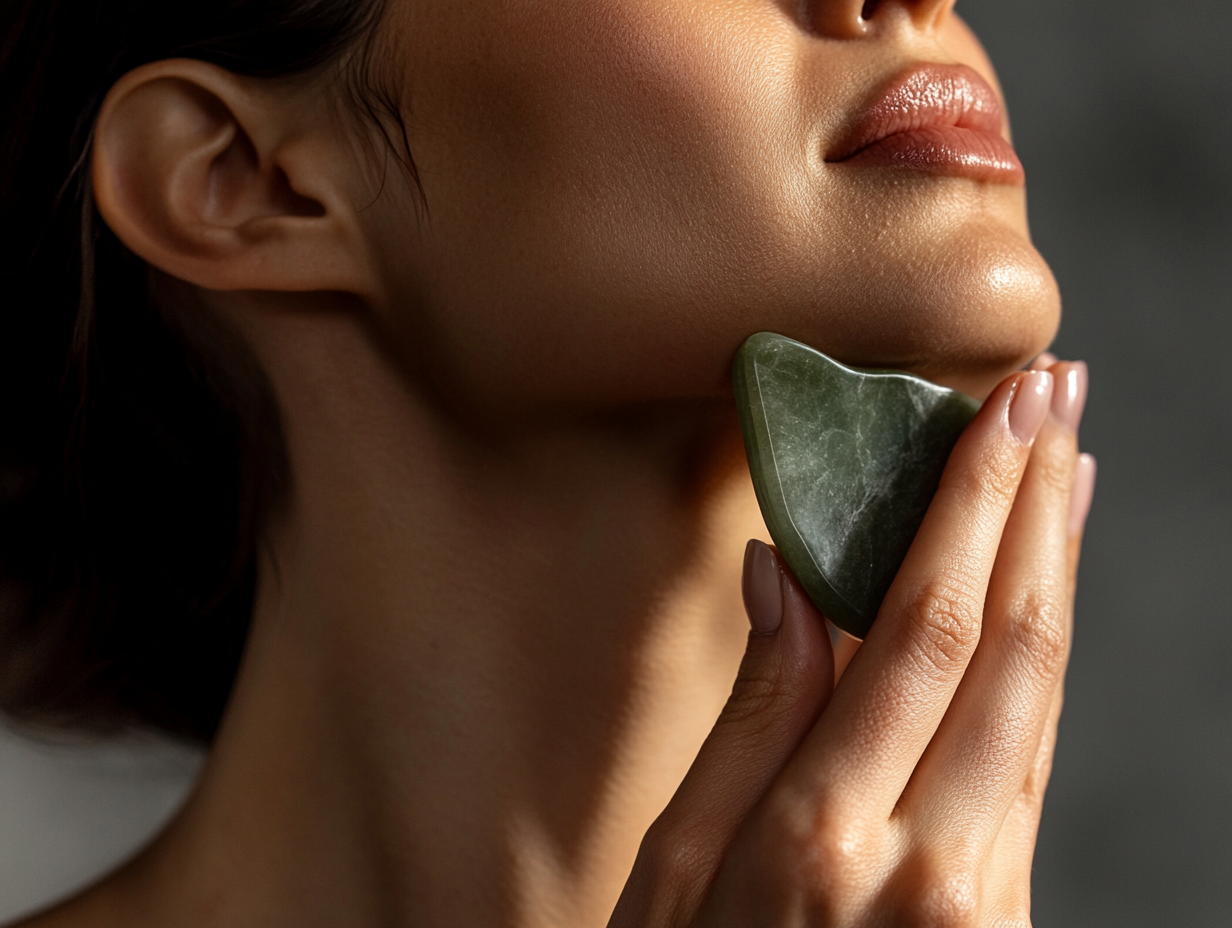EVERYTHING YOU WANTED TO KNOW ABOUT OIL SERUMS AND FACE OILS
3 MIN READ
The good news is, STUNN’s vision is to redefine clean to elevate all aspects of your wellness with safe, healthy, and microbiome friendly ingredients to nourish the largest organ in your body. Basically, we create ultra effective skincare that you can trust, and we don’t use any water in any of our products at this time.
So, in this week’s article I’m focusing on oil based products only.

Let’s start by defining what a face oil is.
The primary function of a face oil is to nourish, as opposed to treat acne or stimulate collagen production. The reason for this is that the molecules in the oils used tend to be larger and don't penetrate as deep into the dermis. While that might make it sound like a face oil isn’t as beneficial as a serum, that’s not necessarily the case.
Your skin barrier and microbiome are ultra important when it comes to the overall health of your skin. It’s your first line of defense, and when it’s healthy, it helps prevent transepidermal water loss, strengthens your immune system, and keeps breakouts, inflammation, and premature aging at bay.

When looking for a face oil, look for products that include antioxidant-rich ingredients like grape seed oil, oat kernel oil, prickly pear, watermelon seed, or cucumber seed oil. Again, the goal of a face oil is to heal, nourish, and moisturize the skin.
Okay, so what’s the difference between a face oil and an oil serum?

Studies have shown that the higher the fatty acid content of the oil, the higher the potential the oil has to penetrate deeper into the dermis. While water-based serums may penetrate deeper than oil serums, active ingredients, when paired with the right carrier oils like squalane, can effectively target skin cells without damaging the skin barrier or compromising the skin microbiome, like many water-based serums tend to do.
If a face oil’s primary goal is to nourish the skin, a serum’s primary goal is to affect or promote change on a deeper or cellular level. Serums are formulated with active ingredients and potent densities of vitamins and antioxidants to address specific skin issues such as acne, aging cells, and collagen and elastin degradation.
For example, a phyto-retinol, like Fountain, is crafted with an ultra-high vitamin A content and clinically proven ingredients that function similarly to a synthetic retinol to effectively exfoliate, increase skin cell turnover, and stimulate collagen synthesis, without the purging or harming the skin barrier.
Serums can also play a leading role in evening skin tone and texture by gently exfoliating, reducing redness, and fading hyperpigmentation, like Gloss was formulated to do.

The difference between face oils and oil serums boils down to two things; oil serums are for targeted benefits for deeper issues like stimulating collagen, and face oils provide healing benefits for barrier issues like preventing transepidermal water loss.
In short, if you’re looking for targeted solutions to treat specific issues like fighting acne, fading hyperpigmentation, and reducing the appearance of pores and fine lines, incorporating serums into your morning and nighttime skincare routine is your best bet!
While oil serums can provide moisture, if you’re looking to address dehydrated skin or repair your skin barrier, be sure to use a face oil and oil cleanser to lock in moisture and prevent TEWL.
More than likely you want a bit of both, so let’s quickly discuss the order in which you want to apply your skincare products.

How to apply your skincare products
The general rule is always cleanse first, then apply all your products from lightest to heaviest, and always finish with an SPF in the morning.
Here is a high-level example of a super intensive morning and nighttime skincare routine. While we don’t think you need every step in order to achieve super healthy, luminous skin, the choice is yours to make. So, here’s the breakdown that includes as many skincare products as you might choose to incorporate into your skincare routines.
Morning:
Oil cleanser
Gel cleanser (we don’t recommend foaming or sudsing cleansers ever)
Essence (like a rose water or gentle toner)
Water-based serum
Eye serum
Oil-based serum
Moisturizing face oil
SPF
Nighttime:
Oil cleanser
Gel cleanser (we don’t recommend foaming or sudsing cleansers ever)
Gentle exfoliator or mask (use only once a week)
Water-based serum
Eye serum
Oil-based serum
Moisturizing face oil

If you’re into a more streamlined routine, we recommend this simple morning and nighttime routine:
Morning: Halo Brightening Oil Cleanser followed by 3-6 drops of Gloss Clarifying Serum, then 4 drops of Dew Brightening Face Oil. Finish with a non-toxic SPF (we like Native’s plant-based SPF)
Night: Prism Restorative Oil Cleanser followed by 3-6 drops of Fountain Phyto Retinol Serum, follow with 4-6 drops of Revival Barrier Repair Face Oil.
There you have it! Face oils and oil serums both have their benefits, it’s just a matter of choosing the products that fit with your unique skin. And remember, always read the labels - some ‘clean’ and ‘natural’ skincare products, when you look deeper, are anything but.
If you have any questions about any ingredients in your other products, always feel free to reach out and ask me about them directly.




